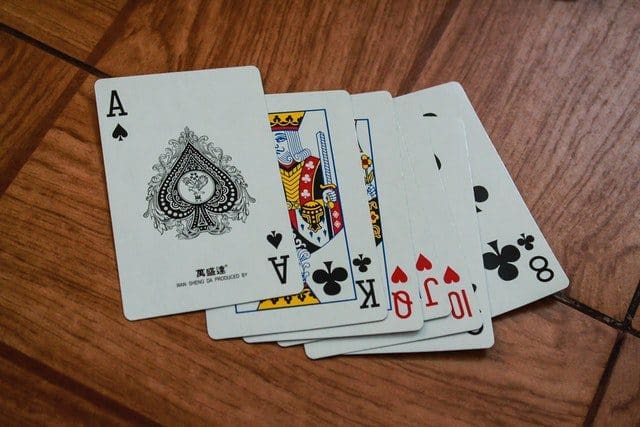ards are now an important tool for casino games. Only a few online casino games do not need playing cards. Here’s the history of its design and evolution for modern standards.
Many casino games are wagered with playing cards. Apart from a few titles like slot machines, almost all table games require different types of playing cards. The question of the origin of this important tool for gambling platforms has always arisen one way or another.
While there’s no doubt that playing cards have a long history, modern-day techniques have not been able to phase this feature out. Anyone with a mobile phone who loves playing online casino games will find different card game types. An Android gaming app or iPhone mobile casino with digital card versions is now a common sight. Let’s look at the origins of gambling cards and their modern evolution.
The Playing Cards
Playing cards usually refers to a piece of card stock, either plastic or paper, used for gambling or magic tricks. Its texture is generally smooth to allow players to handle it better. A set of playing cards is a deck numbering up to 52 cards. The earliest recording of cards usage was the Madiao game, which involved cards divided into suits with coins from China.
History
The history of playing cards can be traced to the early 9th century in China through the Tang Dynasty. The first design did not contain any number of suit, as they were used for leaf games. Instead, each card had a piece of instruction written on them. From the 11th century, trading merchants introduced these playing cards to areas like Egypt. However, the designs here had calligraphic designs with abstracts on them.
Introduction to Europe
The continuous introduction of these cards spread into Europe around the 1300s. The merchants from Egypt began exports into the continent, and in 1367, the first appearance of different types of playing cards was found around Spain or Italy. The patterns or designs consisted of polo sticks, swords, cups, and coins written in ancient Latin. However, the polo design was replaced with batons, since polo was still alien in Europe then.
Throughout the next 14th and 15th centuries, the design of European cards was used to earn real money. The Latin designs are still seen on most Italian playing cards today. From the 15th century, a deck of cards began to see new designs. The Knight, Queen, and King were introduced. The French variant used Ace as the highest-ranking suit after the time of the French Revolution.
The first-ever type of French deck was introduced in 1864 by Samuel Hart. Here, reversible design cards were part of the remake process. This new variant was stopped by the government, though.
Introduction to American and British Players
Around the mid 19th century, American and English gambling venue customers used cards with round corners rather than sharp corners. This prevented the unnecessary revealing of the cards. Most players preferred to use cards with a one-sided design. One side had a card design, and the other used pictures to control unnecessary card tear.
Modern Evolution
Players who use these cards for real money earnings will find them in Germanic, Latin, and French categories. They are all similar to each other, though. The main difference between the Germanic and Latic card decks is the use of high-value cards for Latin and low-value options for Germanic.
French Deck
The French deck is the most commonly used playing card today. It consists of the regular 52-card option, used on cards like Call Break, Rummy, Solitaire, Poker, etc. The ranks are divided into 13 suits, with jokers now among.
Designs
Most designs used here include Hearts, Diamonds, Spades, and Clubs. The club represents the basto and spades, a Spanish sword symbol. The ranking is also different. Numbering is between 2-10, and the court cards Jack, Queen, and King are usually called numbers 11, 12, and 13.
For most card games, an Ace has been introduced as the number 1 above King. Examples of such games include Blackjack and other card games that involve number counting. However, other card games involving arranging cards, such as rummy, placed Ace as the lowest value.
Furthermore, you could find additional cards in the deck called jokers. Jokers were introduced in different games and serve as a wild card, for example, in rummy card games.
Conclusion
Casino playing cards have come a long way. It is now an integral playing mechanism for gamblers who enjoy several table games with numerous rewards and bonuses. Its design has spread from the early 16th century and modern technologies has implemented them into their iGaming sites.
The New Jersey Digest is a new jersey magazine that has chronicled daily life in the Garden State for over 10 years.
- Staffhttps://thedigestonline.com/author/thedigeststaff/
- Staffhttps://thedigestonline.com/author/thedigeststaff/
- Staffhttps://thedigestonline.com/author/thedigeststaff/
- Staffhttps://thedigestonline.com/author/thedigeststaff/


